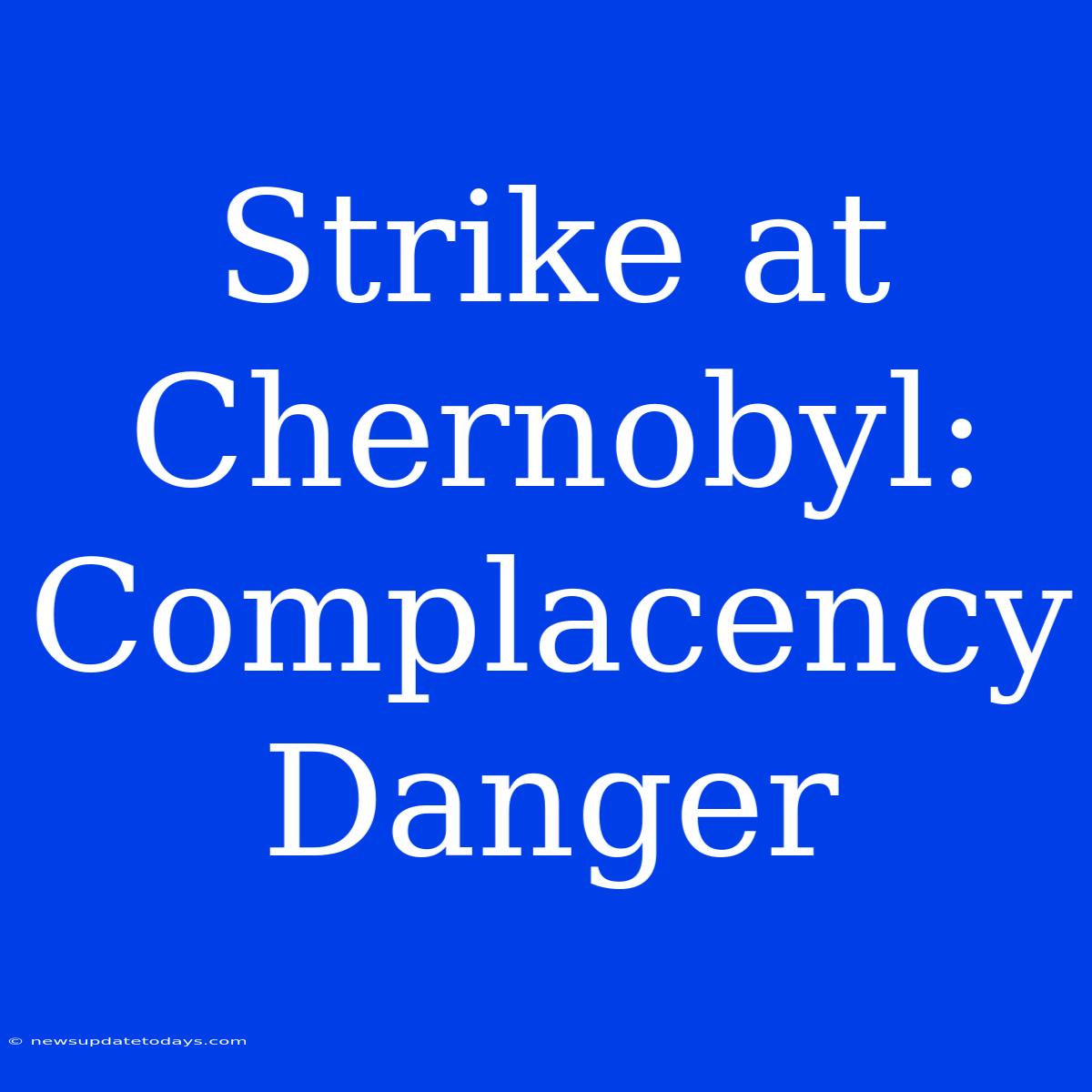Chernobyl Strike: The Peril of Complacency
The Chernobyl disaster, a catastrophic nuclear accident, serves as a chilling reminder of the devastating consequences of complacency in high-risk industries. While the immediate aftermath is well-documented, the long-term implications and the lingering threat of complacency deserve renewed attention. This article delves into the factors that contributed to the Chernobyl disaster, highlighting the dangers of complacency and its relevance today.
The Human Factor: A Recipe for Disaster
The Chernobyl accident wasn't simply a technical failure; it was a profound failure of human judgment and safety protocols. A flawed reactor design, combined with inadequate training, poor communication, and a disregard for safety regulations, created a perfect storm. The operators, under pressure to complete a test, bypassed crucial safety systems, demonstrating a dangerous level of complacency. This complacency stemmed from a belief that the system was inherently safe and that accidents were unlikely, a belief tragically proven wrong.
Complacency: A Silent Killer in High-Risk Environments
Complacency, a state of self-satisfaction and unwarranted confidence, is a silent killer in high-risk environments. It breeds a culture of negligence, where safety procedures are routinely ignored or shortcutted. This is not limited to nuclear power plants; complacency can be found in various industries, including aviation, healthcare, and manufacturing. The common thread is a false sense of security, a belief that accidents simply won't happen.
Lessons Learned (and Unlearned)?
The Chernobyl disaster spurred significant changes in nuclear safety regulations and practices globally. However, the legacy of complacency remains. The Fukushima Daiichi nuclear disaster in 2011, while caused by a different set of circumstances, underscored the persistent vulnerabilities to human error and the enduring threat of complacency.
Preventing Future Disasters: A Multi-Faceted Approach
Preventing future disasters requires a multi-faceted approach:
- Robust Safety Culture: Fostering a culture of safety where reporting errors and near misses is encouraged, without fear of retribution, is paramount.
- Rigorous Training and Education: Comprehensive and ongoing training for personnel, emphasizing the importance of adhering to safety protocols, is crucial.
- Effective Communication: Clear and transparent communication channels between all levels of an organization are essential for identifying and addressing potential risks.
- Regular Audits and Inspections: Independent audits and inspections should be conducted regularly to ensure compliance with safety regulations and to identify any potential weaknesses.
- Technological Advancements: Investing in advanced technologies that enhance safety and minimize human error is essential.
Conclusion: Vigilance, Not Complacency
The Chernobyl disaster stands as a stark reminder of the devastating consequences of complacency. While technological advancements and stricter regulations have improved safety standards, the human element remains the most significant vulnerability. To prevent future catastrophes, a continuous commitment to vigilance, robust safety protocols, and a culture that prioritizes safety over production is absolutely necessary. The fight against complacency is an ongoing battle, one that must be fought relentlessly to avoid repeating the mistakes of the past.

